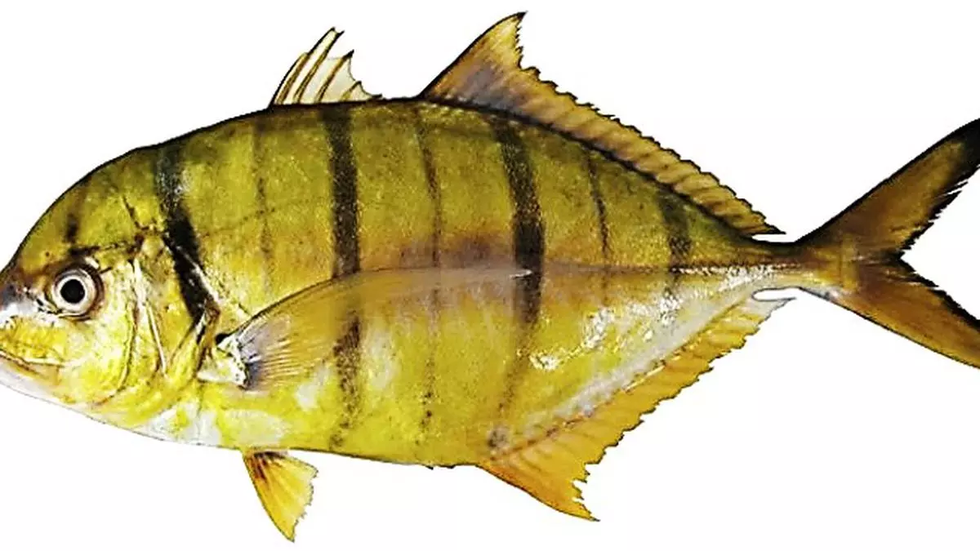In a noteworthy development, researchers at the ICAR-Central Marine Fisheries Research Institute (CMFRI) have achieved captive breeding of golden trevally (Gnathanodon speciosus), a highly valued marine fish species.
Research Process
- Location: The achievement was made at CMFRI’s Visakhapatnam Regional Centre.
- Duration: The success came after five years of dedicated research efforts.
- Milestone: Successful bloodstock development, captive breeding, and larval rearing were accomplished.
Significance
- New Avenue for Seafood Production: This achievement is expected to open up new possibilities for sustainable seafood production.
- Boost to Mariculture: It will also enhance the mariculture activities in India, particularly sea cage farming.
- Economic Impact: The farm-gate value of golden trevally is estimated to be ₹400-500 per kg, indicating its economic significance.
Characteristics of Golden Trevally
- Ideal Candidate for Mariculture: Due to its fast growth rates, good meat quality, and high market demand, golden trevally is an ideal species for marine aquaculture.
- Appearance: Silver grey with yellowish coloration on the belly, scattered black patches, yellow fins, and a black tail.
- Ornamental Value: Juveniles have golden coloration with black bands, making them attractive for aquarium keeping.
Research Team and Leadership
- Team Leader: Ritesh Ranjan, Senior Scientist at CMFRI’s Visakhapatnam Regional Centre.
- Director’s Statement: A Gopalakrishnan, Director of CMFRI, highlighted the significance of this milestone in Indian mariculture.
Impact on Fish Farming
- Sea Farming Potential: Golden trevally’s desirable qualities make it suitable for sea farming.
- Sustainable Fish Farming: Captive breeding offers opportunities for sustainable fish farming practices, including sea cage farming.
- Contribution to Conservation: This technology can also contribute to wild stock restoration efforts through initiatives like sea ranching.
Multiple Choice Questions (MCQs):
- What achievement has been made in India’s mariculture sector?
- A) Successful breeding of clownfish
- B) Captive breeding of golden trevally
- C) Introduction of new coral species
- D) Development of deep-sea fish feed
- Why is golden trevally considered an ideal species for mariculture?
- A) Slow growth rates
- B) Poor meat quality
- C) Low market demand
- D) Fast growth rates, good meat quality, and high market demand
- What is the farm-gate value of golden trevally per kg?
- A) ₹100-200
- B) ₹200-300
- C) ₹400-500
- D) ₹500-600
- Who led the research efforts on golden trevally at CMFRI’s Visakhapatnam Regional Centre?
- A) A Gopalakrishnan
- B) Ritesh Ranjan
- C) A team of international scientists
- D) A team of local fishermen
